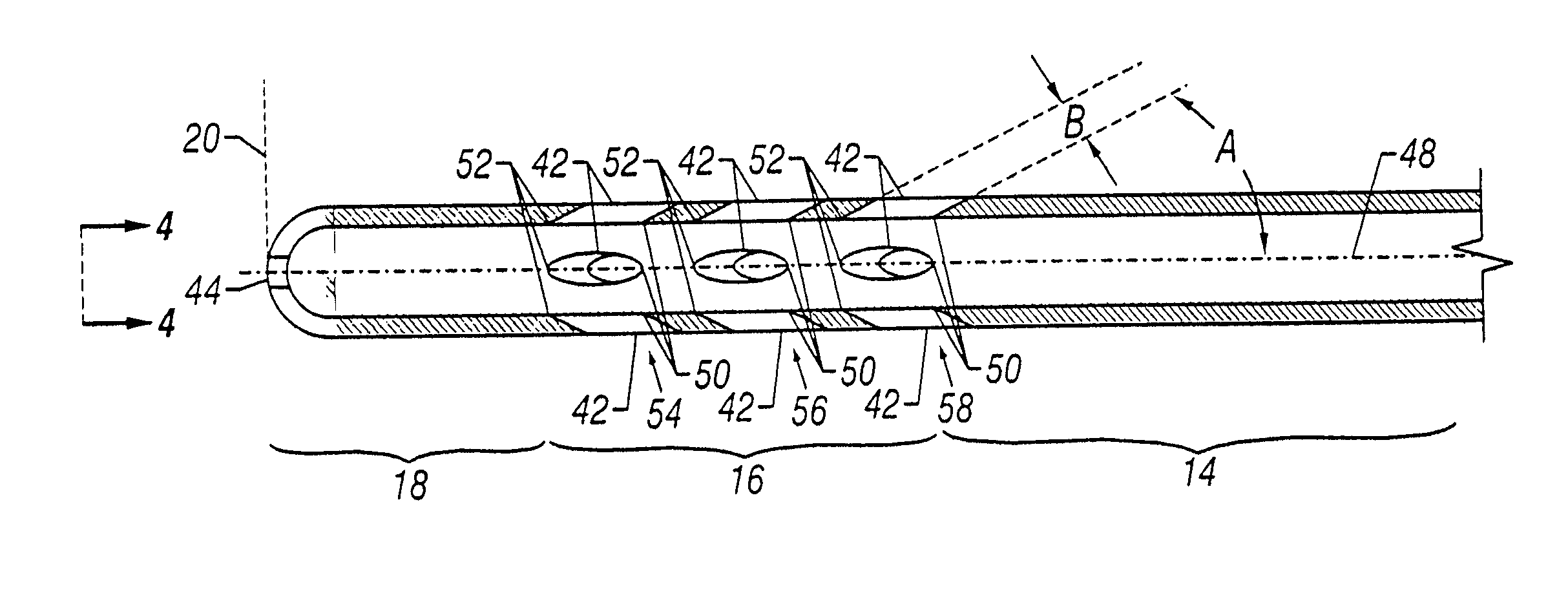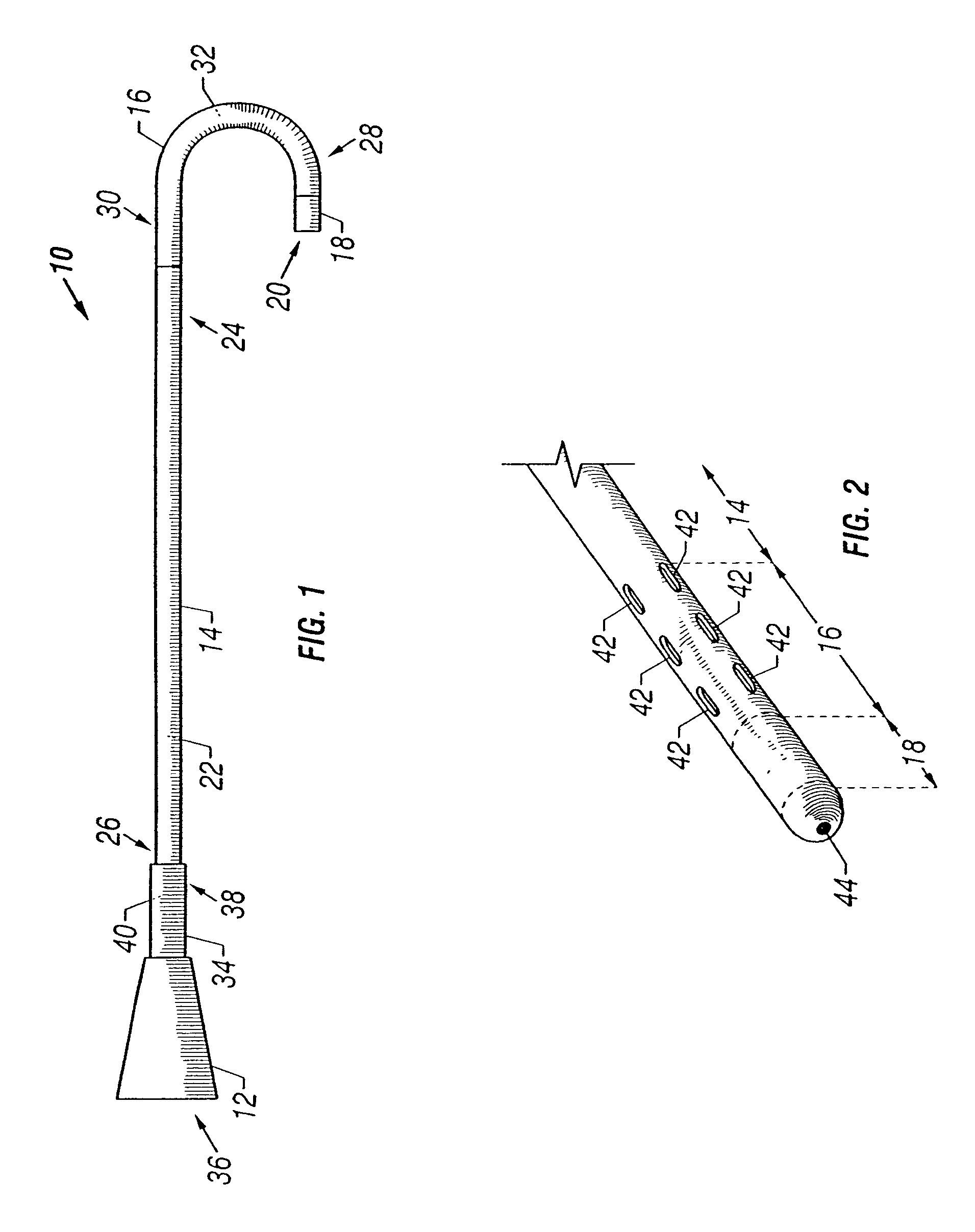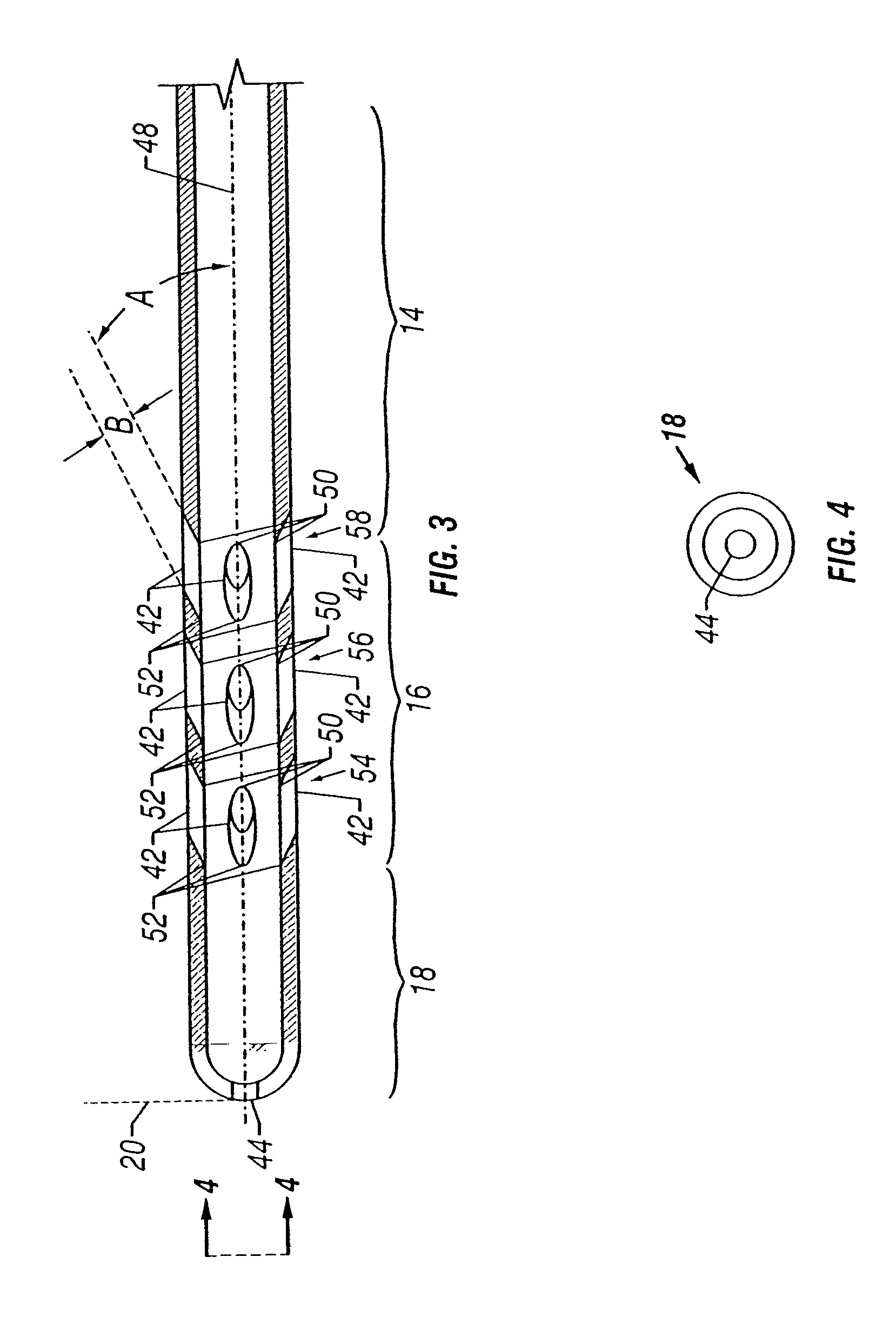Anti-recoil catheter
a catheter and anti-recoil technology, applied in the field of catheters, can solve the problems of increasing the risk of catheter damage, and causing the catheter to be pushed back or to recoil, so as to reduce the trauma of patients and less invasive
- Summary
- Abstract
- Description
- Claims
- Application Information
AI Technical Summary
Benefits of technology
Problems solved by technology
Method used
Image
Examples
Embodiment Construction
[0039]Referring to FIG. 1, an embodiment of a conventional catheter 10, such as a diagnostic catheter used during angiography or other procedures, in accordance with the present invention includes four major sections including a hub 12, shaft 14, stem 16 and tip 18. The entire length of the catheter assembly 10, including the four major sections, has a maximum external or outside diameter of approximately 4 French. As discussed in greater detail below, the tip configuration in combination with the small size of the catheter diameter results in a catheter having improved management of fluid forces that better stabilize the distal tip 20 of the catheter 10 over a wide range of injection parameters.
[0040]As shown in FIG. 1, the majority of the catheter 10 comprises the shaft portion 14 which includes a central lumen 22, a distal end 24 and a proximal end 26. The through lumen 22 of the shaft 14 communicates with the tip 18 for passage of devices or fluids. Attached to the proximal end ...
PUM
 Login to View More
Login to View More Abstract
Description
Claims
Application Information
 Login to View More
Login to View More - R&D
- Intellectual Property
- Life Sciences
- Materials
- Tech Scout
- Unparalleled Data Quality
- Higher Quality Content
- 60% Fewer Hallucinations
Browse by: Latest US Patents, China's latest patents, Technical Efficacy Thesaurus, Application Domain, Technology Topic, Popular Technical Reports.
© 2025 PatSnap. All rights reserved.Legal|Privacy policy|Modern Slavery Act Transparency Statement|Sitemap|About US| Contact US: help@patsnap.com



